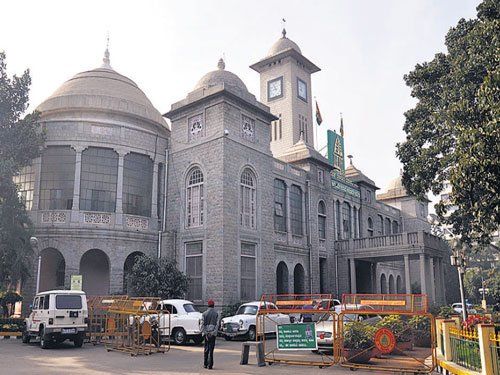Society and Religion during Mauryans
- Megasthenes and later Greek authors describe Indian society at the time of Mauryas as being divided into seven distinct groups – philosophers, cultivators, hunters and herders, artisans and traders, overseers (spies) and the king’s counsellors.
- These occupations were hereditary and
- Intermarriage between groups was not allowed.
- Strabo further divided them into the brachmanes (Brahmanas) and garmanes (shramanas).
- They were considered public benefactors, making prophecies and were exempted from paying taxes.
- Religion: Chandragupta took recourse to Jainism in his later years, and Bindusara favoured the Ajivikas. Asoka adopted Buddhism in his personal life, though he never imposed Buddhism on his subjects.
Agrarian society
The bulk of the population was engaged in agriculture. All accounts speak of the profusion and diversity of crops achieved due to the profitable combination of highly fertile soil, rivers, and plentiful rainfall.
- Non-agrarian activities such as the herding of animals were practised even within villages.
- Kautilya even listed animals among the items that were assessed and taxed.
- Status of Women: Women occupied a high position and freedom; and were employed as the King's personal bodyguards.
- They were permitted to divorce or remarry.
Slavery
- According to Megasthenes, there was no concept of slavery in India.
- But some other sources mentioned situations that led to enslavement – a person could be a slave either by birth, by voluntarily selling themselves, by being captured in war, or as a result of judicial punishment. Kautilya also described different kinds of slaves.
- Ashokan Major Rock Edict V: Concerns about the policy towards slaves. He mentions in this rock edict, "Every Human is my child".
- Religion: Chandragupta took recourse to Jainism in his later years, and Bindusara favoured the Ajivikas. Asoka adopted Buddhism in his personal life, though he never imposed Buddhism on his subjects.
Economy during Mauryans
- Agrarian Economy: The settlement of permanent villages was recognised in the Arthashastra as a method for expanding the agrarian economy.
- These settlements ensured a sound and stable resource base for the State to extract taxes, and the land tax formed the bulk of it. This process of settlement was called janapadanivesa.
- Agriculture in other areas of the Mauryan State, known as janapada territories, was, in all probability, carried on privately.
- Sita or crown lands: In these areas, the King's and the State's rights of possession, cultivation, mortgage and sale were naturally superior.
- Sitadhyaksa, or superintendent of agriculture, supervised the cultivation works here.
Land Revenue
Mauryan rule constitutes a landmark in the history of the improvement of the system of taxation in ancient India.
- Samaharta: Collector general of revenue for the Mauryan Empire. He had control over the expenditure part also.
- Sannidhata: Officer-in-charge of the treasury and store.
- Bhaga (land tax): 1/4th of the produce paid by the peasants.
- The peasants paid a tax called pindakara paid by husbandsmen, which was assessed on groups of villages.
- Other taxes were Bali and Hiranaya (paid in cash).
Trade
The Jataka stories frequently refer to caravan traders carrying large quantities of goods to different parts of the country.
- Trade routes: The main trade routes in northern India were along the Ganges River and the Himalayan foothills.
- Megasthenes also talks of a land route connecting the North West with Pataliputra.
- In the south, it was connected to Central India and in the South-east to Kalinga. This eastern route turned southwards to reach Andhra and Karnataka finally.
- The overland route to countries of the West went via Taxila (near Islamabad).
- Internal trade was considerably beneficial because river transport improved once the forests around the Valleys had been cleared under State initiative.
- The artisans during the Mauryan period were organised along guidelines. The well-known guilds were metallurgists, carpenters, potters, leatherworkers, painters, textile workers etc.
- The State employed some artisans like armourers, shipbuilders, and stone builders. They were exempt from payment of taxes because they rendered compulsory labour services to the State. Other artisans who worked for the State were taxed, like spinners, weavers, miners, etc.
- The State's policy, particularly under Bindusara and Ashoka, to have peaceful and friendly relations with the Greeks also gave a fillip to foreign trade.
- Panyadhyaksha: Superintendent of commerce whose duty was to fix prices of goods.
- Samsthadhyaksa: look after the markets and check the unfair practices of the traders.
- Pautavadbyaksa: superintendent of weights and measures
- Navadhyaksha: facilitated state boats for transport and helped regulate river transport and collect ferry charges.
- Sulkadhyaksa: superintendent of tolls.
- Rajapanya: different goods produced by states.
- Akaradhyaksa: Superintendent of mines
Reasons for the decline of the Mauryan Empire
The imperial authority of the Mauryas began to weaken with the death of Ashoka (232 BCE) and finally collapsed in 180 BCE.
- Successors of Ashoka:
- After Ashoka, the empire got fragmented, and there was a quick succession of rulers. This weakened the imperial control over the administration.
- The quick succession of kings made this difficult, as none of the rulers needed help to settle down and control things.
- These rulers ruled only for a short period and, therefore, could not formulate either new governance policies or maintain the old ones.
- Other Political factors for disintegration:
- Dhamma-mahamattas (large body of officials of State) had become very powerful and oppressive during the latter half of Ashoka’s reign.
- Once the centre became weak, the provinces, too, started breaking away.
- Weak rulers for a short duration resulted in an overwhelming number of new officials constantly emerging and owing only personal loyalty to their respective kings rather than to the State.
- The complex system of spies under the later Mauryas collapsed, which led to corruption.
- Economic factors:
- Gradually, the State monopoly of metals wasbeing lost. The demands on iron, so crucial for the expanding agrarian economy, could no longer be met by Magadha alone.
- Expansion in cultivation, extensive use of forest wood and deforestation, in general, may have led to floods and famines. There is, in fact, evidence of a big famine in north Bengal during the Mauryan period.
- In a centralised administrative system, the problem of not having enough revenues created many other acute difficulties. To enhance the revenues, the Arthashastra suggested that taxes should be imposed even on actors, prostitutes and so on.
Last updated on December, 2025
→ Check out the latest UPSC Syllabus 2026 here.
→ Join Vajiram & Ravi’s Interview Guidance Programme for expert help to crack your final UPSC stage.
→ UPSC Mains Result 2025 is now out.
→ UPSC Notification 2026 is scheduled to be released on January 14, 2026.
→ UPSC Calendar 2026 is released on 15th May, 2025.
→ The UPSC Vacancy 2025 were released 1129, out of which 979 were for UPSC CSE and remaining 150 are for UPSC IFoS.
→ UPSC Prelims 2026 will be conducted on 24th May, 2026 & UPSC Mains 2026 will be conducted on 21st August 2026.
→ The UPSC Selection Process is of 3 stages-Prelims, Mains and Interview.
→ UPSC Result 2024 is released with latest UPSC Marksheet 2024. Check Now!
→ UPSC Prelims Result 2025 is out now for the CSE held on 25 May 2025.
→ UPSC Toppers List 2024 is released now. Shakti Dubey is UPSC AIR 1 2024 Topper.
→ UPSC Prelims Question Paper 2025 and Unofficial Prelims Answer Key 2025 are available now.
→ UPSC Mains Question Paper 2025 is out for Essay, GS 1, 2, 3 & GS 4.
→ UPSC Mains Indian Language Question Paper 2025 is now out.
→ UPSC Mains Optional Question Paper 2025 is now out.
→ Also check Best IAS Coaching in Delhi
Society, Economy & Religion During the Mauryan Era FAQs
Q1. Who were the Dhamma Mahamattas?+
Q2. How was the life of tribes during the Mauryan period?+
Tags: mauryan era quest

















